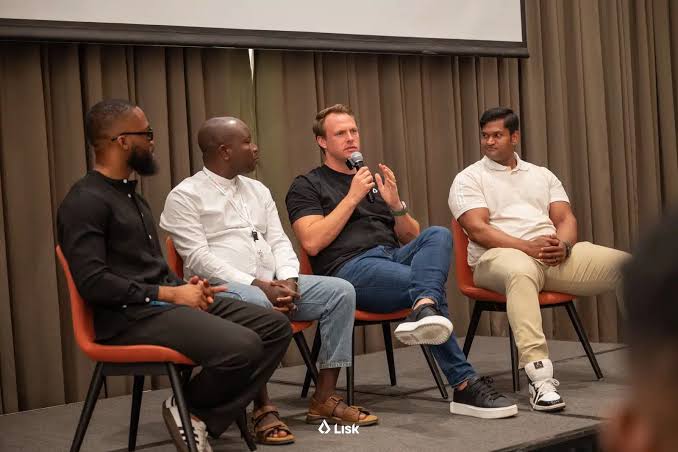Seun Lanlege and his co-founder, David Salami, went viral after Abayomi Semudara posted a video claiming they had raised $5.8 million, bought two flashy cars, and were spending $50,000 monthly on marketing their startup, Hyperbridge.While the video — which is just a skit — might make Lanlege and Salami seem like vain founders splurging on luxury and hype, there’s far more to them, and to what they’re building.In a continent where most blockchain and crypto startups focus on how to sell crypto for naira or make it easier to spend, Lanlege and his team are building a global blockchain infrastructure. One that took two years of deep research and complex mathematics — the kind that could make Sheldon from The Big Bang Theory giddy with excitement.What does Hyperbridge even do? Hyperbridge enables the seamless transfer of crypto assets from one blockchain to another. It sounds straightforward, but cross-chain movement is one of the toughest problems in blockchain technology

Think of blockchains as railway tracks; you can send assets freely along a single track, but moving from one track to another isn’t so simple. If, for instance, you need to send crypto on the Ethereum blockchain but only hold assets on Solana, you’ll need a “bridge” to move those assets across.If commercial banks were blockchains, it would be like struggling to transfer money from Access Bank to UBA. That’s the interoperability problem, and Lanlege says Hyperbridge is solving it by acting as an interoperability layer. Lanlege explained that interoperability has long been one of blockchain’s biggest challenges. Ironically, as more blockchains are built, the issue grows worse.
As far back as 2020, the World Economic Forum described the lack of interoperability as a key reason blockchain was still unfit for enterprise adoption. Lanlege agrees. He describes the situation as a paradox: “As more blockchains are created within silos, the issue gets bigger, even though each chain might be more advanced and solves unique problems.”“I see the discourse in the industry as a coin,” he said. “On one side, people are looking for solutions to scalability; on the other side, interoperability. We’re scaling, but if people on Polygon can’t do business with those on Tron, then we’ve recreated the exact problem we started with.
Challenges and the future Lanlege believes the toughest days of Hyperbridge are behind them. Most of the core infrastructure has now been built, and Hyperbridge currently supports 14 blockchains, including Ethereum, Base, and Avalanche.Although much has been said about the startup spending $50,000 a month on marketing, Lanlege insists the protocol “speaks for itself.” “We don’t need to talk too much,” he said. “Technical blockchain founders can see the maths and understand why it works.
Still, competition in the bridge space is fierce. Other protocols boast higher transaction volumes and continue to innovate rapidly. While Lanlege’s confidence in Hyperbridge’s mathematical foundations remain unshaken, it may only be a matter of time before other engineers with similar expertise rise to challenge his solution.